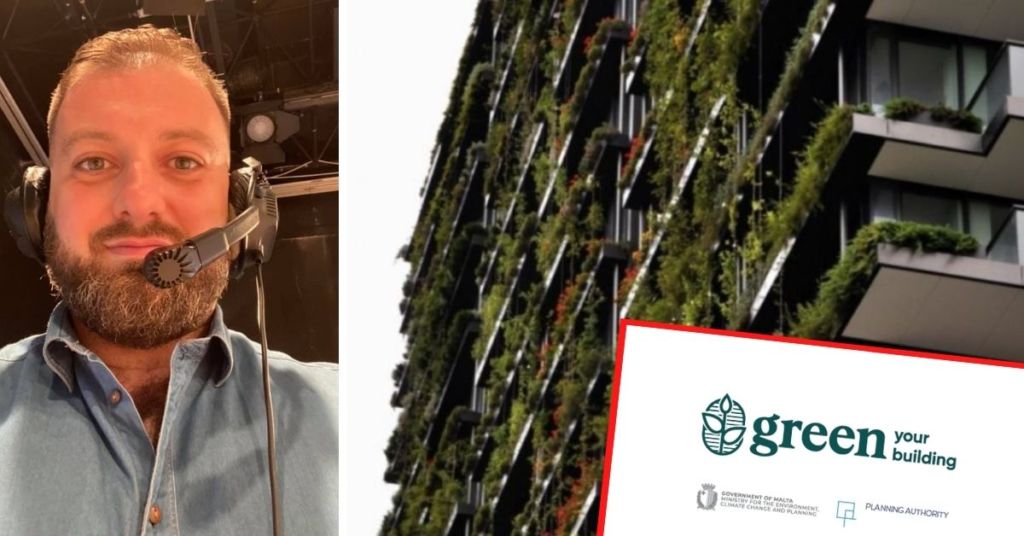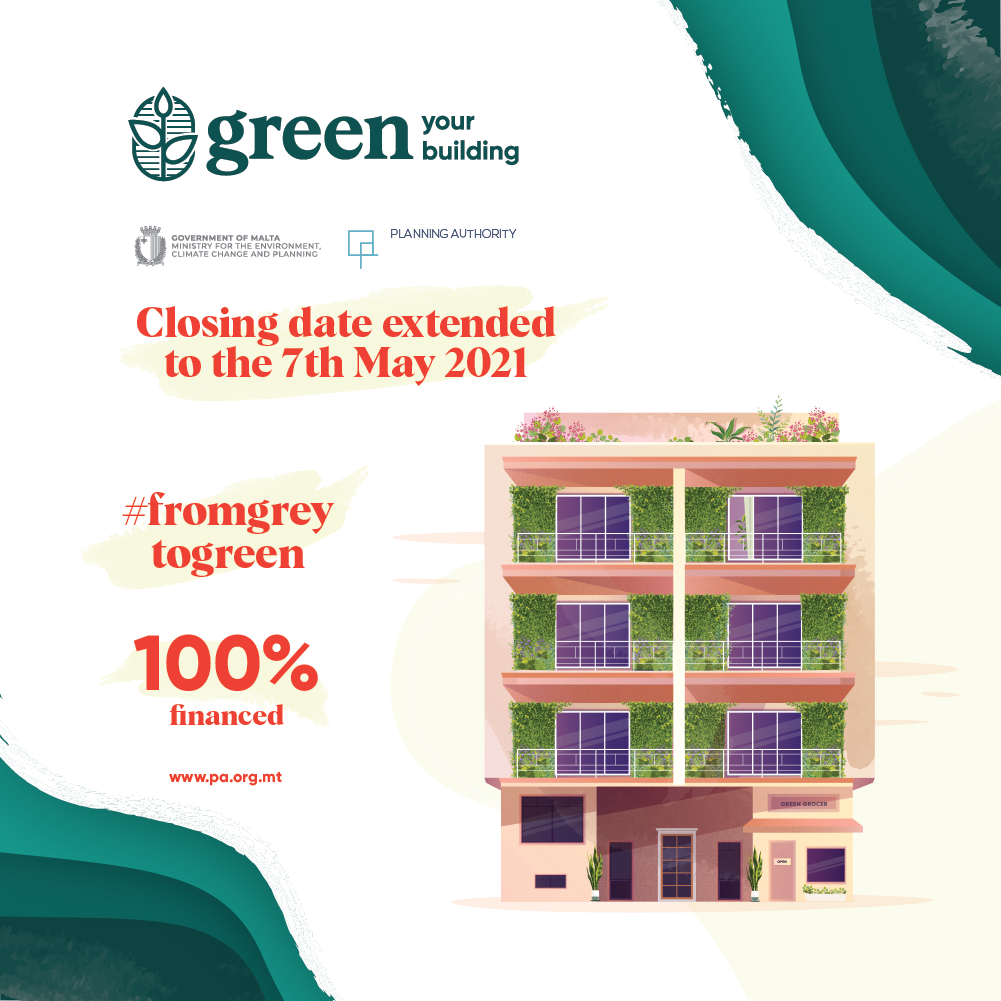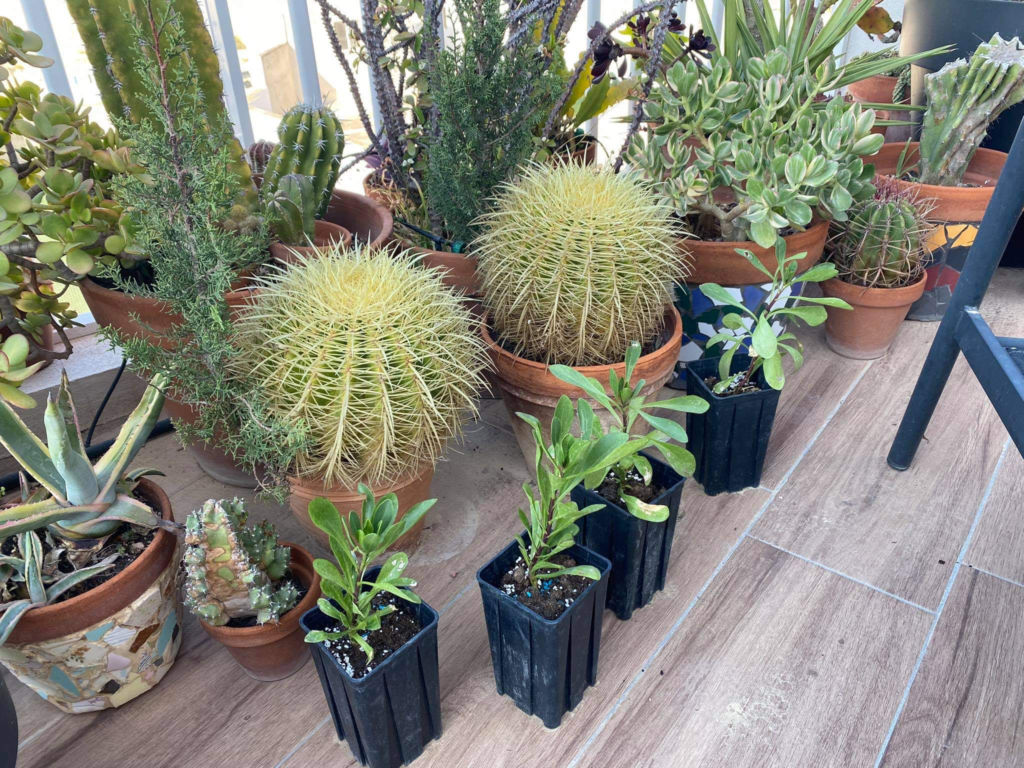Planning Authority Defends Green Wall Small Print That Applicant Said Put Him Off Scheme

The Planning Authority has defended the terms and conditions within a scheme to incentivise the planting of vertical gardens after an applicant warned it put him off taking part entirely.
A PA spokesperson reached out to Lovin Malta after Russell Sammut opened up about irksome terms and conditions he faced when applying – from limitations on what type of plant species he was allowed to plant to an 8% interest rate that would be imposed on him, along with a full refund of the grant, if the plants had to die.
These are the Planning Authority’s explanations, along with Sammut’s responses.
PA: “The context of this case is a request for 100% funding for the creation of a green wall, approximately 25m2 at penthouse level. The application was never rejected from the PA’s end.”
“At the end of May, the PA requested four points of clarifications/modifications to the application. Most concerning was the type of plant species that were being proposed. The applicant proposed to install 914 plants from 9 different plant species. All the proposed species were succulents but for two.”
RS: “It was never rejected, but it was never approved. The four points of clarification were:
1. Kindly confirm which model of the green roof system will be used i.e. whether PG14 (18pcs/m2) or PG9 (40pcs/m2).
2. Please revise the plant species being proposed. Almost all plants are succulents, these provide very little ecosystem services. A good percentage of the selected plant species should be either native or known to attract beneficial fauna such as pollinator insects.
3. The image of the Asparagus officinalis does not coincide with the image in doc (1g). Kindly clarify.
4 Please justify item 1.02 in the BoQ (6c). If the plants are already in pots why is the additional soil required?
PA: “The heavy use of succulents defeats, the scope of why the grant scheme was introduced. The aim of the scheme is to increase ecosystem services within the urban area. Whereas the aesthetic aspect is an ecosystem service however it is not the only one.”
“The scheme aims at mitigating other urban-related issues such as flooding, pollution, urban heat island and also the lack of urban biodiversity. The latter service can only be enhanced if the right kind of plants are selected.”
RS: “The plants are mostly succulents as I needed plants that are hardy especially when bearing in mind that they have to survive for five years and cannot be substituted and have to be replaced by the same specimen even if they do not survive the environment.”
“To be able to observe the rules, I needed plants that are hardy and easily sourced. I could not risk any seasonal plants or indigenous plants which are a) not so easy to source, b) Most of which are propagated seasonally. Please note that succulents are not the cheapest plants, but are very adept for my environment.”
“I also asked the architect to ask PA to identify which plants they suggest I put and the architect told me that I should propose.”
“I’m sure that green walls are excellent in preventing floods; we should install them allover Birkirkara and Msida instead of trees and green areas (sarcastic). The only floods that can be prevented are the ones in houses by choosing plants that do not shed a lot of leaves ending up clogging drainage systems. Same logic can be applied to urban heat.”
“Re their last sentence, I’m open to their suggestions as long as the plants survive my environment… we all know what happened to the Green Wall in Marsa.”

PA: “While it is acknowledged that areas such as rooftops could experience harsh microclimates which would require hardy species, however hardy species need not only be succulents. Most species which grow in a karst environment such as the traditional Maltese garigue, are able to withstand the harsh microclimate of rooftops.”
“Such species have adapted to living in shallow soils in environments exposed to high winds and intense solar radiation not to mention saline conditions. In addition, these species require very little water to survive.”
RS: “I would love to have more local flora like widnet il bahar, fidloqqom and wild saghtar (cultivated specimens not uprooted from the wild) but as explained earlier I needed plants that are hardy and easily sourced I could not risk having missing plants at the next random inspection and jeopardising €10,000.”
“I am so in favour of this, that when I had decided to do the project out of my own pocket and without these restrictions I started sourcing indigeneous plants and so far managed to get five widnet il baħar.”

The five widnet il-baħar Sammut acquired
PA: “Additionally, in our correspondence with the applicant, it was never stated that all the plants had to be changed, but a percentage. The scheme does give some leeway as long and the selected species are not invasive.”
RS: “This is true, however the percentage was never specified. and should I replace 10% that means 90 plants, 20% = 180 plants, 30% = 270 plants and so on, I would be crazy to install so many plants without the possibility of replacing them with something else should they die out and have to sustain a failing species for five years? (the maintenance fund will not cover such a heft expense plants average €6 each.”
PA: “It is quite obvious that when one provides a grant scheme, especially from public funds, one is to expect that terms and conditions apply to safeguard the interests of the scheme under which the grant is made available. The terms and conditions are there to guide both the applicant and the PA to diminish any abuse and ensure that the money is correctly spent.”
RS: “I agree, no contest to this – actually I really hope that it is not abused.”
PA: “Lastly, it is only reasonable that in the terms and conditions of the scheme there is a safeguard against the removal of any installed green wall which is paid for (in part or in full) by the PA.”
“The fund requires that the installed green infrastructure is to remain in place, maintained and fully functional for at least 5 years. Dismantling it or not taking care of it would be a breach of the agreement. This is done to ensure that only those who are serious about installing a green wall or retrofit a front garden with trees and shrubs need apply and would filter out those who apply for financial profit or otherwise.”
RS: “They did not deny what I said in anyway including the obscene 8% interest rate should things go badly.”